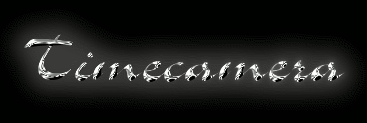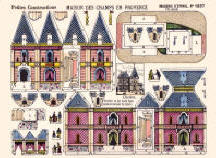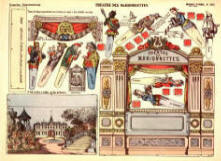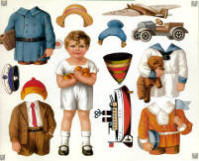|
ESSENTIAL TIPS FOR BUYING IMAGE COLLECTIONS
IF YOU INTEND TO
MAKE PRINTS FOR SALE don't be lured into buying image collections
where a large quantity is trumpeted in the headline. You can't beat the
law of physics to fit a quart into a pint pot when it comes to good
quality large file size images! It can be very expensive
to ignore copyright laws also, as many amateur fly by night, on-line
sellers commonly do. Here are a few tips:
1.
QUANTITY:
The larger the quantity the less
you will get (in quality). Don't be lured into buying large numbers of
low quality, tiny size images - they are simply unprintable. Thousands
of images on a CD only means wasted money!
2.
THE SELLER: Some image collections offered for sale, such as branded advertising
or travel posters, may be still under copyright protection. If a new, unknown seller's
description blithely encourages you to start a business selling such prints be
very wary -
ask.
3.
RESTORED?:
Be sure the antique images have been restored and/or enhanced
especially for digital printing.
This is an essential task that can make all the difference in a print's
saleability or otherwise. If the seller has not already carried out this
work
it will mean a great deal of extra time for you and affect the viability and the
reputation of your business. The lure of a 'cheap' image collection
usually means money wasted.
4.
SIZE:
Make sure the supplied images are both a suitable size physically for
making prints and also well over the basic 72dpi often supplied. Image pixels
are often quoted as a physical dimension but this can be misleading for
beginners if they need to compress them themselves to achieve a high
enough resolution/physical size ratio for saleable prints (assuming the
supplied quality is high enough to begin with). A high dpi resolution is
only meaningful if it is accompanied by a large enough physical size
too and the original is also of high clarity.
It is easy to create so called high resolution 300dpi images by
reducing poor-resolution images down to small physical sizes or
alternatively by expanding the dpi figure artificially with a graphics
program (without making an actual difference to the quality of the
print) so be wary
of dealers using these deceptions which rely on the ignorance of a
purchaser.
5.
LEGALITY:
Do resist the temptation of lifting images from the internet. Often this
is simply theft of another's scan or photo which may be copyrighted, or
the image itself may still be under copyright. Remember too that retro
style doesn't necessarily mean the work is actually old and public
domain. Additionally it may be a substantially restored and/or uniquely
enhanced work which, as a significantly improved version of the original
is itself subject to automatically renewed copyright protection.
Even apparently public domain material shown on museum sites may be
protected simply because the scans are another's work (only the original
itself is copyright-free, not the scan).
Several museums now employ the use of agents to track illicit usage of
its material. We are often told "I found a similar image on Google, why
should I buy yours?" Search sites simply trawl for images. Obviously
they do NOT check copyright before displaying them and simply warn the
user that material may be copyrighted (it often is). It's a minefield
that needs to be trod very carefully where the danger is a potential
large financial loss through a big damages suite rather than loss of a
limb.
Avoid the temptation at all costs. It simply isn't worth the enormous
risk, especially when better quality, restored image collections can be
had for extremely low cost anyway!
Be careful out there
- or better still order only from Timecamera!
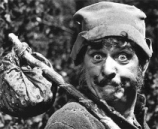
"Shoulda gone to Timecamera!"
|
